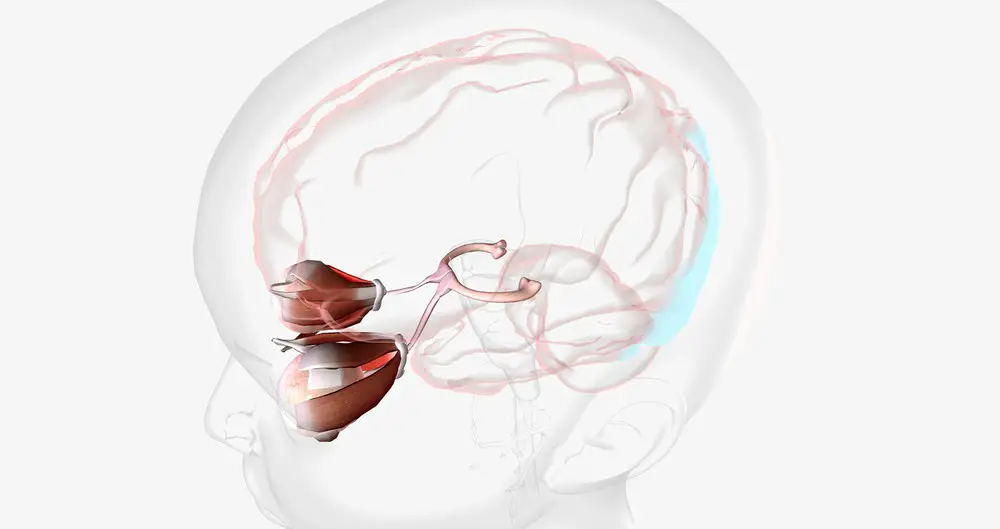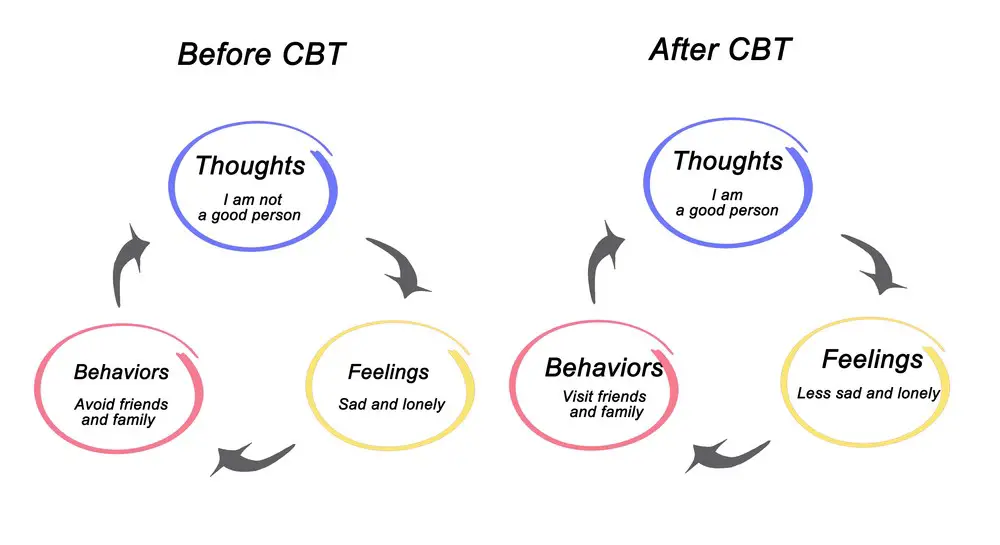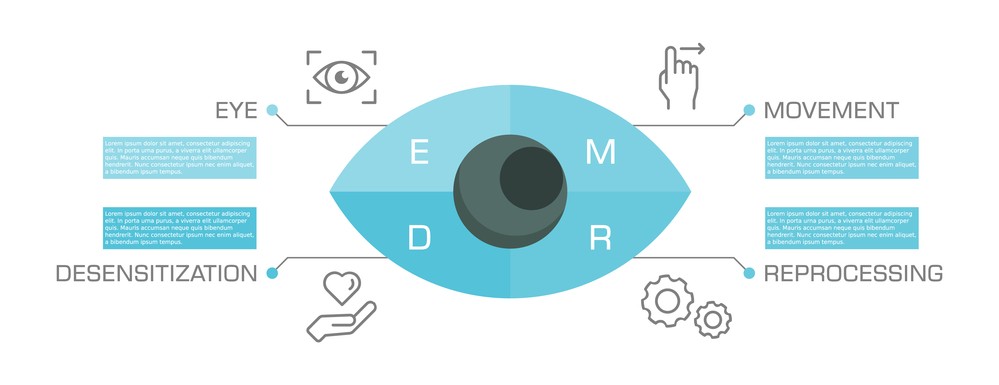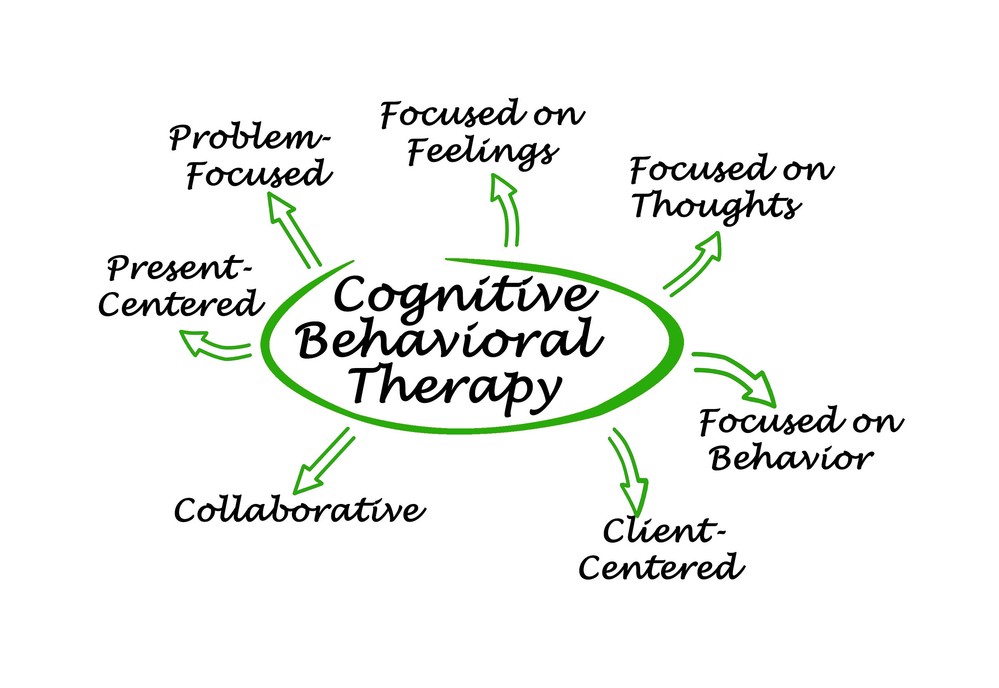As a BetterHelp affiliate, we receive compensation from BetterHelp if you purchase products or services through the links provided
Eye Movement Desensitization and Reprocessing (EMDR) and Cognitive Behavioral Therapy (CBT) are two distinct therapeutic approaches used to treat mental health issues such as anxiety, depression, and post-traumatic stress disorder (PTSD). Both therapies have been proven to be effective, but they differ in their methodologies and underlying principles. This article aims to comprehensively compare EMDR and CBT, helping individuals decide which approach might best suit their unique needs and preferences.
EMDR therapy was developed in the late 1980s by Dr. Francine Shapiro, and it primarily focuses on processing traumatic memories and reducing the individual’s distress related to them. It utilizes bilateral stimulation, such as eye movements or tapping, to help clients reprocess and integrate difficult memories, ultimately reducing symptoms. On the other hand, CBT has roots dating back to the 1960s and is built upon the idea that individuals’ thoughts, feelings, and behaviors are all interrelated. Therefore, CBT aims to help clients identify and modify negative thought patterns, thus promoting healthier emotional regulation and more adaptive behaviors.
In the upcoming sections, we will delve deeper into the core components of both EMDR and CBT, discussing their similarities and differences regarding treatment techniques, efficacy, and overall approach to mental health. This comparative analysis will assist readers in making informed decisions about which therapy may be best suited for addressing their specific mental health concerns.
EMDR and CBT Overview

Eye Movement Desensitization and Reprocessing (EMDR)
EMDR is a psychotherapy technique developed by Francine Shapiro in the late 1980s. It aims to help individuals process and alleviate the effects of traumatic memories. EMDR therapy involves recalling distressing experiences while engaging in bilateral stimulation, such as eye movements or tapping. This dual attention process is believed to facilitate the resolution of traumatic memories and reduce their emotional impact.
EMDR has effectively treated various psychological disorders, including post-traumatic stress disorder (PTSD), anxiety, and depression. It is considered a time-limited therapy and can be completed within 6 to 12 sessions. EMDR does not require clients to extensively discuss traumatic events, which may benefit those with difficulty verbalizing their experiences.
Cognitive Behavioral Therapy (CBT)

CBT is an evidence-based psychotherapy approach that identifies and modifies maladaptive thoughts, emotions, and behaviors. It was developed as a combination of cognitive and behavioral therapy in the 1960s by Aaron T. Beck and other psychologists. CBT emphasizes the role of cognitive processes in influencing feelings and actions, and it helps individuals develop coping strategies for managing emotional challenges.
CBT is often used to treat various psychological issues, such as anxiety disorders, depressive disorders, eating disorders, and substance use disorders. This therapy typically consists of 10 to 20 sessions but may vary based on the individual’s needs and goals. CBT sessions include psychoeducation, cognitive restructuring, behavioral experiments, and collaborative goal setting.
| Therapy | Description | Conditions Treated |
| Eye Movement Desensitization and Reprocessing (EMDR) | A psychotherapy technique involving bilateral stimulation while recalling traumatic memories. | PTSD, anxiety, depression |
| Cognitive Behavioral Therapy (CBT) | An evidence-based approach that identifies and modifies maladaptive thoughts, emotions, and behaviors. | Anxiety disorders, depressive disorders, eating disorders, substance use disorders |
In summary, EMDR and CBT are distinct therapeutic approaches that address different psychological issues. EMDR focuses on processing and alleviating the effects of traumatic memories, while CBT emphasizes modifying maladaptive thoughts and behaviors. Nevertheless, both therapies are effective for various mental health concerns and provide alternative options for individuals seeking treatment.
Applications of EMDR and CBT

Depression
EMDR and CBT are both effective treatments for depression. CBT focuses on helping individuals change negative thought patterns and behaviors, while EMDR desensitizes emotional distress associated with traumatic memories.
- CBT helps to identify and replace dysfunctional thoughts to alleviate symptoms
- EMDR aids in processing traumatic memories contributing to depression
PTSD and Trauma
EMDR and CBT have been found beneficial in treating PTSD and trauma-related symptoms. They differ in their approach to addressing the underlying issues:
- EMDR targets desensitization and reprocessing of traumatic memories
- CBT emphasizes learning coping strategies and techniques to manage stress
| Therapy | Focus |
| EMDR | Desensitization of memories and emotions related to trauma |
| CBT | Cognitive restructuring and stress-management strategies |
Anxiety Disorders
EMDR and CBT address anxiety disorders, such as generalized anxiety, panic disorder, phobias, and obsessive-compulsive disorder (OCD). Their approaches are:
- EMDR: helps individuals process and reduce the intensity of anxiety-provoking memories
- CBT: teaches skills to manage and cope with anxiety-inducing thoughts, panic, and distress
Other Mental Health Conditions
EMDR and CBT have applications in treating various other mental health conditions, including eating disorders, insomnia, bipolar disorder, and more.
- EMDR can help process underlying traumatic experiences contributing to these conditions
- CBT aims to modify unhelpful thought patterns and develop coping skills
EMDR and CBT are helpful psychotherapies in mental health, with varied applications and methods for treating different disorders. Their effectiveness has been proven through various studies and clinical practice, making them essential tools for professionals in mental health treatment.
Therapeutic Process
Assessment and Preparation
In both EMDR and CBT, the therapeutic process begins with a structured assessment phase. During this stage, the therapist identifies the specific memories, thoughts, and feelings contributing to the client’s post-traumatic stress disorder (PTSD) or other issues. In EMDR, this step involves taking a detailed history of the client’s past experiences, including their childhood memories and recent triggers. In CBT, the assessment phase focuses on understanding the client’s thoughts, feelings, and actions that maintain their psychological distress.
The preparation phase in both therapies is essential for developing a solid therapeutic relationship and establishing a safe environment for the client. In EMDR, the therapist teaches the client various self-regulation techniques to manage their distress during the treatment sessions. The therapist and client work together in CBT to identify specific goals and develop a treatment plan.
Treatment Phase
The treatment phase is where the core therapy begins. In EMDR, the treatment comprises eight distinct steps: history-taking, preparation, assessment, desensitization, installation, body scan, closure, and reevaluation. Bilateral stimulation, a distinguishing feature of EMDR, is used in the desensitization and installation phases to facilitate processing of traumatic memories. This stimulation can involve eye movements, tactile stimulation, or auditory tones. Francine Shapiro, the founder of EMDR, believed this process helps people heal from PTSD by connecting and reprocessing the emotional, cognitive, and physical sensations associated with a traumatic event.
Conversely, CBT uses structured sessions that involve a combination of psychoeducation, cognitive restructuring, behavior modification, and exposure therapy. These techniques help clients identify and challenge their maladaptive thoughts, replace them with more adaptive ones, and modify their behavioral patterns. For example, exposure therapy, often used in the treatment of PTSD, involves gradually and systematically exposing the client to feared situations or traumatic memories to decrease their anxiety and distress.
Follow-up and Closure
The follow-up and closure phases are essential in EMDR and CBT to maintain and integrate the therapeutic gains into the client’s daily life. In EMDR, the therapist continually reviews the client’s progress, reevaluating the treatment plan and making necessary adjustments. During the closure phase, the therapist consolidates the work and ensures the client leaves the sessions feeling emotionally stable and secure.
In CBT, the follow-up phase typically involves a review of the client’s progress with their therapist and may include booster sessions to reinforce the skills learned during therapy. Finally, the closure phase in CBT focuses on developing a relapse prevention plan and ensuring the client is equipped with the necessary tools and strategies to improve their mental health.
Both EMDR and CBT have specific protocols and procedures designed to provide effective treatment for PTSD and other mental health conditions. While each therapy follows its unique treatment process, both are committed to a thorough assessment, a collaboration between therapist and client, and ongoing follow-up and closure to promote lasting change and healing.
Effectiveness and Efficacy
When comparing the effectiveness and efficacy of Eye Movement Desensitization and Reprocessing (EMDR) and Cognitive Behavioral Therapy (CBT), both have demonstrated positive results in treating various mental health conditions. As a result, numerous meta-analyses and randomized controlled trials have been conducted to examine the benefits of these two therapeutic approaches.
EMDR effectively treats post-traumatic stress disorder (PTSD) and other trauma-related conditions. According to the American Psychiatric Association (APA), EMDR is a recommended evidence-based treatment for PTSD. In addition, a meta-analysis of EMDR efficacy found that this therapy can significantly reduce symptoms in PTSD patients.
CBT has a broader scope and is used in treating anxiety disorders, depression, and other mental health issues. In addition, several randomized controlled trials have demonstrated CBT’s benefits in reducing symptoms and improving overall functioning. Therefore, the APA also endorses CBT as an evidence-based treatment for various psychological disorders.
Although both EMDR and CBT have demonstrated effectiveness, individual responses to treatment may vary. In addition, personal experiences, comorbid conditions, and therapist expertise can influence the outcome of a specific therapy for a given individual.
The choice between EMDR and CBT as the appropriate intervention relies on various factors, including the client’s needs, preferences, and the therapist’s expertise. Both therapies have been validated by scientific evidence, and clinicians should be well-versed in using these approaches to offer the best possible care to their clients.
Key Differences and How to Choose
Eye Movement Desensitization and Reprocessing (EMDR) and Cognitive Behavioral Therapy (CBT) are two therapeutic approaches. Choosing the best fit depends on individual needs and treatment goals.
EMDR primarily focuses on processing past traumas and disturbing memories. It uses bilateral stimulation, where the therapist asks the client to follow their hand movements or a stimulus while recalling the traumatic event. This process helps to desensitize and modify the thoughts and emotions associated with the traumatic memory.
CBT, on the other hand, emphasizes identifying and changing negative thought patterns and behaviors. It uses various techniques, such as cognitive restructuring and exposure therapy, to help clients develop coping strategies and create new ways of thinking and responding.
Some critical differences between EMDR and CBT include the following:
- Focus: EMDR is geared towards past traumas, while CBT addresses current thought patterns and behaviors.
- Method: EMDR uses bilateral stimulation, while CBT employs diverse techniques such as cognitive restructuring and exposure therapy.
- Emphasis on cognitions: CBT emphasizes cognitions and the relationship between thoughts and emotions.
| EMDR | CBT | |
| Focus | Past traumas and disturbing memories | Current thought patterns and behaviors |
| Method | Bilateral stimulation | Cognitive restructuring, exposure therapy, etc. |
| Emphasis | Processing and modifying traumatic memories | Relationships between thoughts, emotions, and behaviors |
To choose between EMDR and CBT, consider several factors:
- The nature of the issue: If past trauma is the primary concern, EMDR may be more appropriate. For addressing ongoing thought patterns, CBT could be a better fit.
- Personal preference: Some individuals may feel more comfortable with the structured approach of CBT or the more experiential nature of EMDR.
- Therapist availability: Look for a therapist trained and experienced in the desired approach.
In some cases, a combination of both treatments may be beneficial. However, the most crucial element is finding a therapeutic approach that resonates with the individual and supports their journey toward healing and growth.
Techniques and Tools
Eye Movements and Bilateral Stimulation
EMDR (Eye Movement Desensitization and Reprocessing) therapy uses eye movements and other forms of bilateral stimulation, such as auditory tones or physical tapping, to help clients process traumatic memories. The therapist guides the client’s eye movements as they recall difficult experiences, which can reduce the emotional intensity of these memories. Bilateral stimulation may involve tapping or body scan exercises to address trauma-related physical sensations.
Cognitive Behavioral Techniques
Cognitive Behavioral Therapy (CBT) is a form of talk therapy that helps clients identify and challenge cognitive distortions contributing to emotional distress. The therapist and client work together to identify triggers and negative thought patterns reframed using more adaptive perspectives. Relaxation exercises, such as deep breathing or progressive muscle relaxation, help clients develop coping strategies. Psychoeducation plays a significant role in CBT, as clients learn to understand the symptoms of mental health conditions.
Other Strategies
Both EMDR and CBT incorporate additional strategies for treatment. For example, with EMDR, therapists often use the VOC (Validity of Cognition) scale to assess clients’ progress in restructuring their thought patterns. The VOC scale measures the client’s sense of self-worth on a scale ranging from 1 (completely false) to 7 (entirely true), helping both therapist and client track progress over time.
In CBT, some therapists might utilize additional tools, such as worksheets or thought records, to help clients practice cognitive restructuring techniques outside therapy sessions. These tools encourage clients to independently identify and challenge cognitive distortions, reinforcing the skills learned in therapy.
EMDR and CBT offer various tools and techniques to address multiple trauma and emotional distress aspects. While the focus may differ between EMDR’s emphasis on eye movements and bilateral stimulation and CBT’s use of cognitive restructuring, both therapies are evidence-based and have demonstrated effectiveness in treating various mental health conditions.
Considerations and Limitations
When comparing EMDR and CBT, it’s essential to consider the specific needs and characteristics of the individual seeking therapy. Both therapies have been proven effective for various mental health issues, but their applicability may vary based on the patient’s circumstances.
One significant aspect to consider is the targeted mental health issue. While both therapies have shown effectiveness in treating post-traumatic symptoms, EMDR was initially developed for post-traumatic stress disorder (PTSD) and may be more adept at addressing trauma-related concerns. On the other hand, CBT has demonstrated strong results in treating various mental conditions, such as anxiety, depression, addiction, and personality disorders.
Another factor to take into account is the therapy treatment’s format. Group therapy can provide some individuals with valuable social support and interaction; however, EMDR is often implemented in one-on-one sessions. CBT therapy can be conducted in both individual and group settings, offering more flexibility in treatment.
Both therapies acknowledge the importance of past experiences and how they can contribute to current negative patterns and thoughts. EMDR primarily addresses emotional responses to past traumatic events, while CBT aims to modify negative thought patterns and improve coping skills. Ultimately, the choice between the two may depend on whether a patient’s needs lean more toward addressing emotional responses or cognitive restructuring.
Despite the proven effectiveness of both therapies, it’s crucial to acknowledge their limitations. Neither EMDR nor CBT is universally successful for all participants, and not every individual responds well to either therapy. Therefore, the need for reevaluation is essential – if a patient is not benefiting from one approach, it may be worth considering the other or exploring other mental health treatment options.
It’s also important to note that these therapies may have limited effectiveness for specific disorders. For instance, EMDR has not been thoroughly researched in treating schizophrenia, and its applicability remains uncertain. Similarly, CBT may not be the best choice for those with more severe personality disorders, whereas other approaches, like dialectical behavior therapy (DBT), might be more appropriate.
In conclusion, considering both EMDR and CBT’s strengths, limitations, and the patient’s specific needs is vital when selecting the most appropriate therapy. A thoughtful analysis of these factors can help ensure the most effective treatment for each individual’s mental health concerns.
FAQs
What are EMDR and CBT?
EMDR (Eye Movement Desensitization and Reprocessing) is a psychotherapy technique that primarily focuses on helping individuals overcome traumatic experiences or memories. EMDR incorporates elements of various therapeutic approaches, including cognitive, behavioral, and experiential therapies.
CBT (Cognitive Behavioral Therapy) is a type of psychotherapy that aims to change negative thought patterns and behaviors in individuals who suffer from mental health disorders such as anxiety, depression, or PTSD. CBT primarily focuses on the cognitive model, which identifies and alters dysfunctional beliefs and emotions.
How do EMDR and CBT work?
EMDR:
- Uses bilateral stimulation (eye movements, tapping, or auditory tones) to access and reprocess traumatic memories
- Enables individuals to gain new perspectives on their traumatic experiences
- It aims to reduce the emotional intensity of traumatic memories
CBT:
- Focuses on recognizing and challenging negative thought patterns
- Develops healthy coping strategies to manage stress and emotional distress
- Encourages individuals to face and confront their fears through gradual exposure
Who can benefit from EMDR and CBT?
EMDR is typically used to treat individuals who:
- Have experienced traumatic events or prolonged stress
- Suffer from PTSD, anxiety, depression, or related mental health issues
CBT is generally recommended for individuals who:
- Have anxiety, panic disorders, depression, or other mental health issues
- Struggle with negative thought patterns and cognitive distortions
- Seek to change destructive behaviors and develop healthier coping mechanisms
How long does treatment take?
EMDR:
- Duration varies depending on the complexity and severity of the trauma
- Can range from a few sessions to several months of treatment
CBT:
- Typically lasts between 12 to 20 sessions
- It may require more time for individuals with multiple complex issues
What are the potential side effects or risks?
EMDR:
- Temporary distress and discomfort during the reprocessing of trauma
- May experience vivid dreams, memories, or emotional reactions
CBT:
- Discomfort during exposure therapy or cognitive restructuring exercises
- It may require time and commitment to practice new skills and strategies
- Breaking the Silence: Why Men’s Mental Health Matters More Than Ever - April 15, 2025
- How to Transform a Home’s Patio Space into a Relaxing Space - March 23, 2025
- 5 Strategies to Use a Cell Phone to Help Manage Your Stress - March 23, 2025
This site contains affiliate links to products. We will receive a commission for purchases made through these links.



